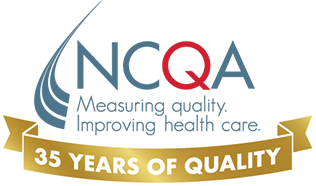| Content Area | Criteria | Resource Link | Description |
| TC | 02 | http://www.ihi.org/resources/Pages/Changes/OptimizetheCareTeam.aspx | Resource on how to optimize staff responsibilities |
| 02 | https://www.integration.samhsa.gov/operations-administration/OATI_Tool3_ART.pdf | Toolkit on how to optimize administrative staff responsibilities to benefit clinical practice | |
| 02 | http://www.improvingprimarycare.org/team/pcp | Resource on how to optimize staff responsibilities | |
| 04 | https://www.stepsforward.org/modules/pfac | Module teaching how to create a patient advisory council | |
| 07 | http://www.nachc.org/research-and-data/prapare/toolkit/ | Toolkit to better understand social determinants of health | |
| 08 | https://integrationacademy.ahrq.gov/sites/default/files/AHRQ_AcademyGuidebook.pdf | Information on behavioral healthcare integration in primary practice | |
| KM | 02 G | https://healthleadsusa.org/resources/the-health-leads-screening-toolkit/ | Social needs screening toolkit |
| 12 | https://www.cdc.gov/media/releases/2012/p0614_preventive_health.html | Discussion on benefits of preventative care | |
| 14 | https://www.ahrq.gov/sites/default/files/wysiwyg/professionals/quality-patient-safety/patient-safety-resources/resources/match/match.pdf | Guide to medication reconciliation at transitions | |
| 16 | http://www.teachbacktraining.org/ | Information on teach back training | |
| 17 | http://www.improvingprimarycare.org/work/medication-management | Guide to medication management | |
| 24 | https://www.ahrq.gov/professionals/education/curriculum-tools/shareddecisionmaking/index.html | Toolkit for shared decision making | |
| 24 | http://msdmc.org/3-assess/ | Toolkit for shared decision making | |
| 24 | https://shareddecisions.mayoclinic.org/ | Informative website about shared decision making | |
| 13 | http://www.jabfm.org/content/28/2/170.full.pdf | "Patient Empanelment: The Importance of Understanding Who Is at Home in a Medical Home" | |
| AC | 13 | http://www.annfammed.org/content/10/5/396.full | "Estimating a Reasonable Patient Panel Size for Primary Care Physicians With Team-Based Task Delegation" |
| http://www.commonwealthfund.org/~/media/files/publications/issue-brief/2014/aug/1764_hong_caring_for_high_need_high_cost_patients_ccm_ib.pdf | Article discussing benefits and strategies to care management | ||
| CM | 03 | https://nf.aafp.org/Shop/practice-transformation/risk-stratified-care-mgmt-rubric | Risk stratification rubric available to members of the AAFP |
| 03 | http://www.calquality.org/storage/documents/cqc_complexcaremanagement_toolkit_final.pdf | Risk stratification rubric from California Quality Collaborative | |
| 03 | http://www.millimanriskadjustment.com/ | MARA – The Milliman Advanced Risk Adjuster is a model of risk stratification in which risk scores are normalized to a given population. | |
| 04 | http://www.aafp.org/fpm/2015/0100/fpm20150100p7-rt1.pdf | Care Plan template from AAFP, not exclusive to members | |
| 06 | http://www.dartmouthatlas.org/downloads/reports/preference_sensitive.pdf | Resource on how to incorporate patient preference into care management | |
| 08 | http://www.ihi.org/resources/pages/tools/selfmanagementtoolkitforclinicians.aspx | Toolkit to aid clinicians in promoting self-management | |
| 08 | https://www.ahrq.gov/professionals/prevention-chronic-care/improve/self-mgmt/index.html | Resources on self management | |
| 08 | http://champsonline.org/tools-products/clinical-resources/patient-education-tools/patient-self-management-tools | Condition specific self management tools | |
| 08 | https://jamanetwork.com/journals/jamainternalmedicine/fullarticle/ | Article discussing proper communication between primary and specialist clinicians | |
| CC | 14 | http://nihcr.org/analysis/improving-care-delivery/prevention-improving-health/ed-coordination/ | Information on improving communication between emergency and primary physicians |
| 16 | https://share.kaiserpermanente.org/article/kaiser-permanente-study-finds-tailored-post-hospital-visits-lower-risk-readmission-medicare-advantage-patients/ | Article discussing advantages of post hospital primary care visits | |
| QI | https://www.ahrq.gov/sites/default/files/publications/files/pcmhqi2.pdf | Resource for building quality improvement in primary care | |
| 03 | http://www.ihi.org/resources/Pages/Measures/ThirdNextAvailableAppointment.aspx | Information on how to utlize third next available appointment measurement | |
| 08 | https://www.ahrq.gov/professionals/prevention-chronic-care/improve/system/pfhandbook/mod4.html | Benefits of PDSA cycle |
PCMH 2017
